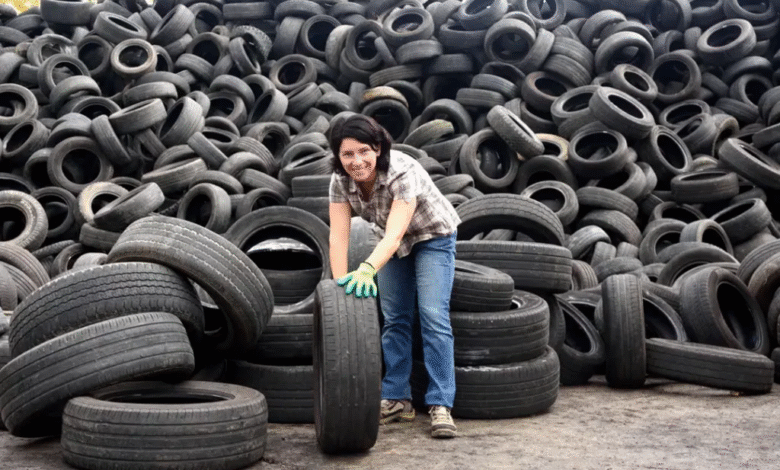The Remarkable Journey of Tires: From Raw Materials to Road-Ready

Key Takeaways:
- Understand the intricate process of tire manufacturing.
- Explore how modern technology influences tire innovation and performance.
- Learn about sustainable practices and their impact on the tire industry.
Introduction to Tire Manufacturing
Tires are fundamental to vehicular safety and performance, yet they often remain overlooked until a problem arises. Each twist and turn on the road echoes the craftsmanship and technology embedded in these round marvels. The tire industry has grown significantly over the years, contributing billions to the global economy while continually evolving to meet the demands of modern vehicles. By exploring the intricate journey of tire manufacturing, we unveil how technology and sustainability converge to create the advanced tires gracing our roads today.
The Foundation: Raw Materials and Their Sources
At the heart of any tire lies a carefully selected mix of raw materials, each contributing uniquely to the tire’s durability, responsiveness, and overall performance. Natural rubber plays a star role, making up a significant component of the tire’s structure. Among the plethora of tire brands, Hercules Tires exemplifies the variety and innovation within this dynamic market. This material is harvested from rubber trees, primarily grown in regions with tropical climates, and its production process is economically and environmentally vital. For a deeper dive into the complexities of rubber production, consider exploring Natural Rubber Production and Its Markets. Alongside rubber, steel wires provide the necessary reinforcement for maintaining structural integrity, while various fabrics add flexibility and resilience. These materials form a composite engineered to withstand high pressures and extensive wear. Interestingly, the quest for alternative natural rubber sources, such as guayule and dandelions, showcases the industry’s commitment to sustainability and resource diversification, which may shape future raw material sourcing strategies.
The Art and Science of Tire Design
Crafting a tire is akin to creating a masterpiece, combining artistry with scientific precision. Each tire is meticulously designed to cater to specific vehicular needs and driving conditions. For instance, tires for high-performance sports cars focus on grip and speed, whereas those for off-road vehicles emphasize toughness and tread traction. Engineering a tire involves advanced computer simulations and modeling techniques, allowing designers to predict performance outcomes and make necessary adjustments before manufacturing. This predictive modeling speeds up the development process and ensures that the final product delivers on performance, efficiency, and safety. Furthermore, cutting-edge design technology enables the customization of tread patterns to meet particular performance criteria, further elevating the driving experience for diverse vehicle classes.
Manufacturing Processes from Start to Finish
The production journey from raw materials to a finished tire involves a series of meticulously orchestrated steps:
- Compounding: In this stage, various types of rubber and chemical additives are blended to create a specific compound that forms the base of the tire. This foundational blend is critical, as it influences the tire’s ability to withstand environmental conditions.
- Building: The compounded material is then assembled onto a drum, incorporating layers of fabrics and steel reinforcements to form a basic tire structure. This assembly is a careful process that requires precision to ensure the structural layers are uniformly distributed.
- Curing: Finally, heat is applied to vulcanize the rubber, molding it into its final shape while enhancing its flexibility and durability. This transformative step solidifies the tire’s construction, preparing it for extensive road use.
Each tire is crafted through these stages to meet rigorous quality standards, ensuring longevity and performance metrics. Innovation in curing processes, such as microwave curing technology, could further streamline production, decreasing energy consumption and enhancing efficiency.
Technology’s Influence on Tire Innovation
The influence of modern technology has ushered in groundbreaking advancements within the tire manufacturing realm. Today, many tires are equipped with smart sensors and technologies designed to enhance the driving experience by providing real-time feedback on tire pressure and wear conditions. These technological strides contribute to a safer driving environment and offer increased fuel efficiency and overall vehicle performance. For intriguing insights into how tire technology is evolving, you might find The Future of Tire Technology quite informative. Moreover, these innovations extend beyond consumer vehicles, impacting commercial fleets and public transportation systems by offering predictive maintenance capabilities, which can enhance operational efficiency and reduce downtime.
Sustainability in Tire Production
As our global community becomes increasingly aware of environmental issues, the tire industry is shifting substantially toward more sustainable production methods. Eco-friendly materials and innovative recycling methods are at the forefront of this transformation, aimed at reducing the industry’s environmental footprint. Initiatives like using recycled rubber compounds and biodegradable materials in manufacturing minimize waste and conserve energy. These sustainable practices benefit the environment and often result in cost savings for manufacturers, demonstrating that ecology and economy can harmoniously coexist in industrial contexts. Research into alternative materials, such as silica derived from rice husk ash, exemplifies the innovative approaches adopted to improve sustainability further.
Challenges and Future of the Tire Industry
While innovation flourishes, the tire industry also faces its share of challenges. Volatile prices of raw materials can create economic strain, and introducing new regulations necessitates continuous adaptation in manufacturing processes. Despite these hurdles, there is optimism on the horizon. Advances in artificial intelligence are set to revolutionize tire design and production, reducing manufacturing costs and improving customizability. This technological leap may see the production of smarter, more adaptable tires that can adjust to a myriad of road conditions automatically. Additionally, the industry’s increasing embrace of collaborative innovations, such as public-private partnerships in research and development, could accelerate the adoption of next-generation technologies.
Real-Life Examples of Tire Innovations
Recent innovations in tire technology illustrate the industry’s commitment to progress. Noteworthy are the developments in airless tire technology, designed to offer smooth rides without worrying about flats or punctures, and energy-efficient tires that contribute to reduced fuel consumption and carbon emissions. As industry standards continue to evolve, so do the characteristics of the tires we rely on, driving us toward a future replete with safer, more efficient mobility solutions. Exploring tire materials that inherently self-repair or change shape in response to environmental conditions promises to redefine resilience and adaptability, heralding an exciting era for tire technology.




